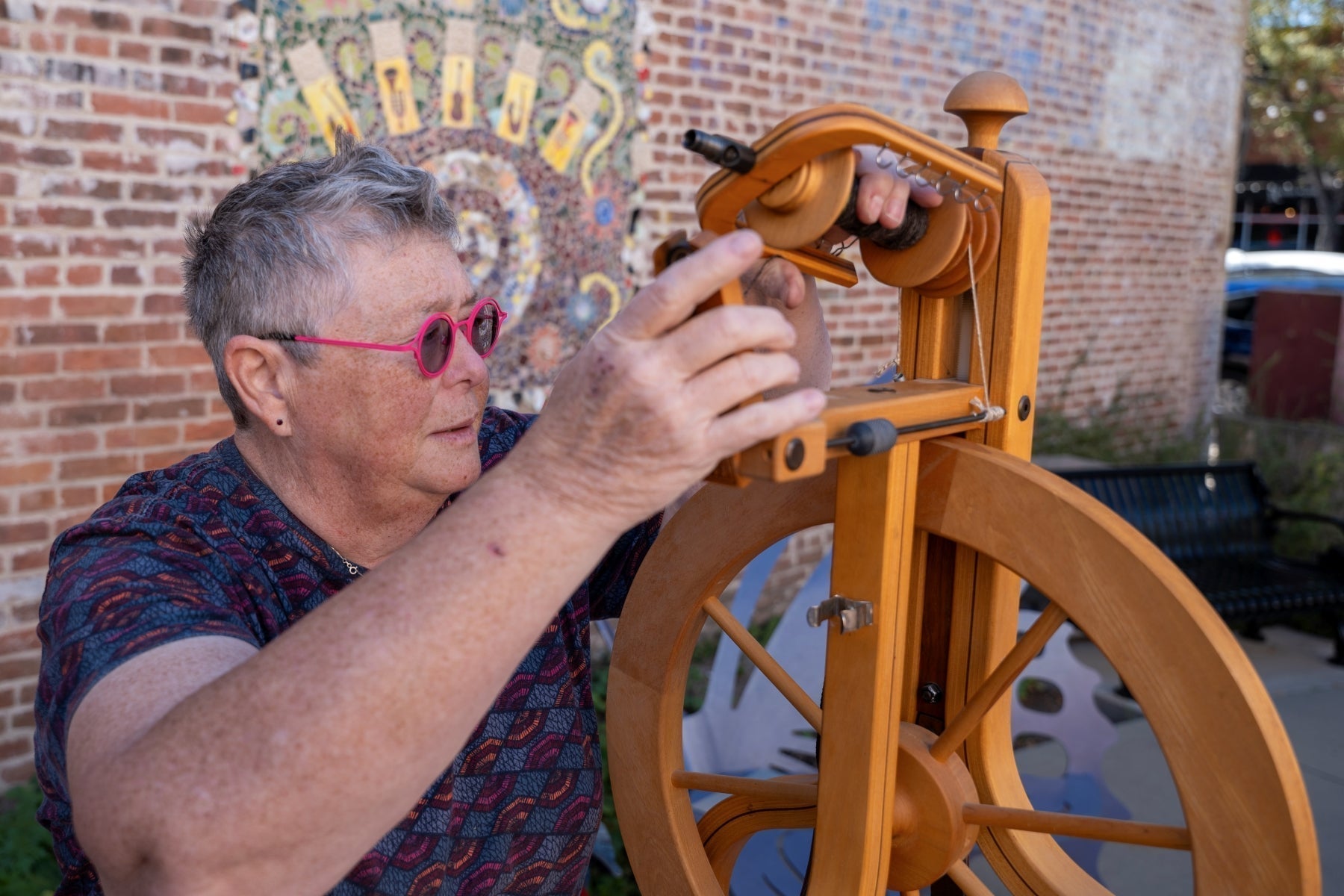The flyer won’t turn.
- The poly or cotton drive band is not over the flyer whorl—set the drive band in a groove of the whorl.
- The cotton drive band is too loose. For double drive spinning, increase the take-up. For double drive or Scotch tension spinning, tie a new drive band that is slightly shorter.
- The flyer needs oil. Remove it from the wheel, then add a drop of spinning wheel oil to the back end of the shaft where it touches the rear bearing, and to the front of the shaft where it touches the orifice bearing.
- Make sure there's a gap of 1/16" between the front maiden and the flyer shoulder. The front maiden can bind the flyer shaft if there's no gap.

The yarn won’t wind on.
- Check to be sure that the yarn is not wrapped around a flyer hook.
- There may not be enough tension. Tighten the drive band or the Scotch tension spring and string.
- In double drive mode, the whorl on the bobbin should be smaller than the flyer whorl. If it isn't, use the smaller end of the bobbin, or change the flyer whorl.
The yarn winds on too fast.
Slow your treadling, or loosen the take-up on the Scotch tension spring and string (for Scotch tension spinning) or the drive band (double drive spinning).
The yarn winds on erratically.
If you tied your cotton drive band, check to see that the knot isn’t too large or too hard.
The bobbin isn’t turning on the flyer shaft.
- For Scotch tension spinning, make sure the spring and string goes over the large end of the bobbin and that it isn't too tight.
- Remove the bobbin from the flyer shaft. Add a drop of spinning wheel oil to the spots where the bobbin touches it.
- Remove the flyer assembly from the wheel and try spinning the bobbin on the shaft with your finger. If the bobbin doesn’t turn freely, it needs to be reamed. Contact Customer Service for assistance.
Treadling is too hard.
The tension on either the drive band or the Scotch tension spring and string is too tight. Loosen and then retighten the tension only enough to make the yarn start to draw in. You may also want to try a lower or higher seat.
Treadling is squeaky or noisy.
- Try adjusting your foot's placement on the treadle(s). Experiment until you find the right spot.
- If your wheel has a wood treadle support bar with PVC or leather hinges, contact Customer Service.
- If your older Matchless wheel has the metal treadle support bar with white nylon hinges, try a drop of oil on each of the hinges.
Bobbins are noisy.
Changes in climate may cause a bobbin to become noisy. Also, bobbins may become noisy when they are very full. To fix noisy bobbins, use white grease. Place the bobbin on the flyer shaft. Then place a small amount of white grease on the flyer shaft at either end of the bobbin. Put a drop of oil on top of the white grease. When finished spinning, wipe the white grease off the flyer shaft to prevent the shaft from becoming sticky.
The problem could also be a noisy whorl. To determine if the noise is coming from the bobbin or the whorl, place the drive band (or bands) first over the whorl, then treadle and listen for noise. If the whorl is quiet, place the drive band (or bands) over the bobbin, then treadle and listen for noise. A noisy bobbin should be treated as discussed above. To fix whorl noise, the flyer and all whorls should be sent to Schacht for tightening.
The Matchless Scotch tension rod (old style MOA) slips and doesn't hold tension.
Tighten the thumbscrew underneath the mother-of-all. If your wheel does not have the thumbscrew, you have a couple of options to try. You can put a couple of drops of water in the holes for the end of the scotch tension rod. This will let the wood swell a bit, and hold the rod better. Or you can widen the end of the rod by hitting the end of the rod with a hammer and nail set.

